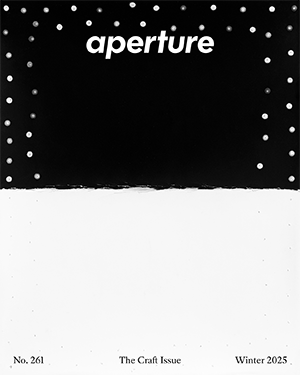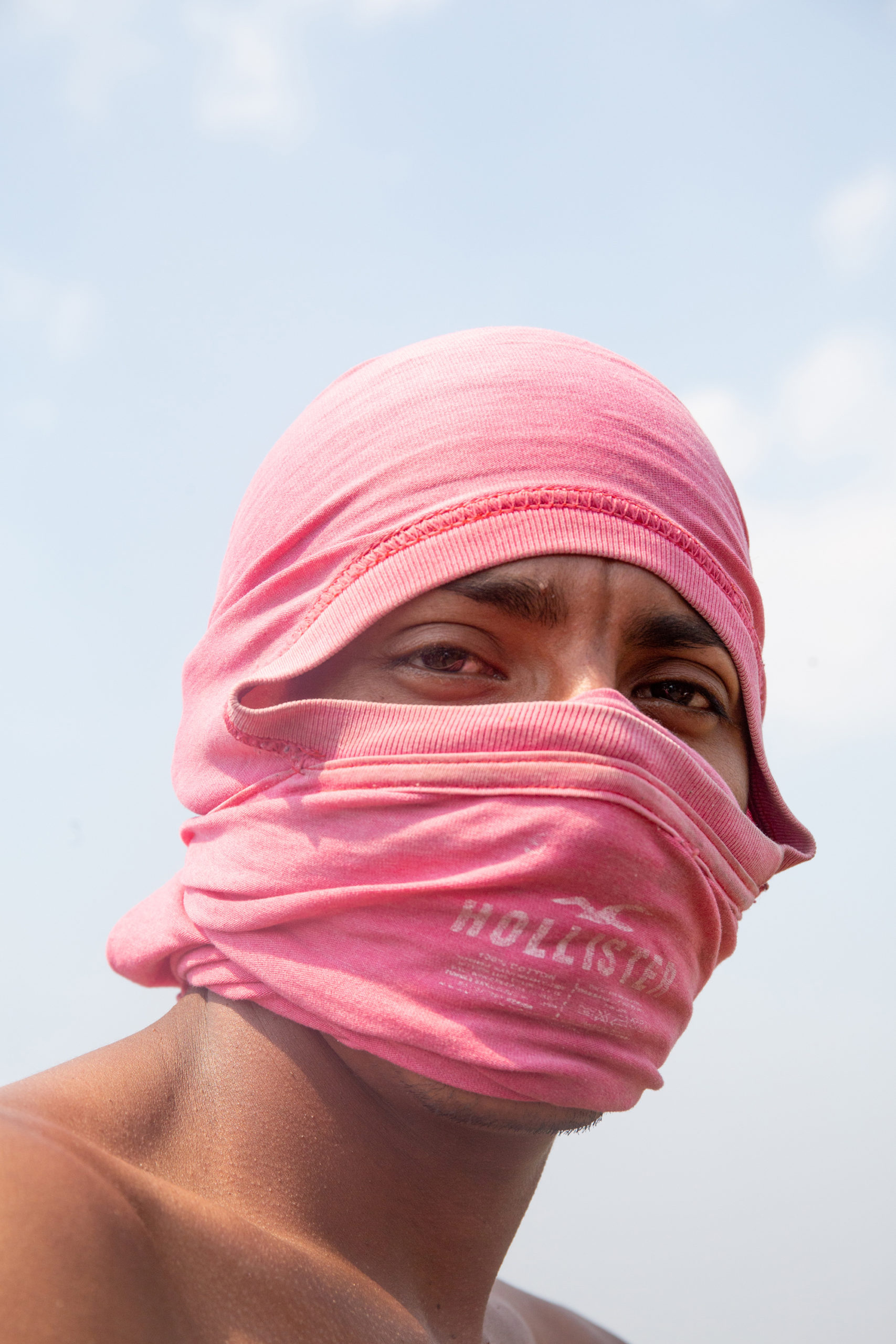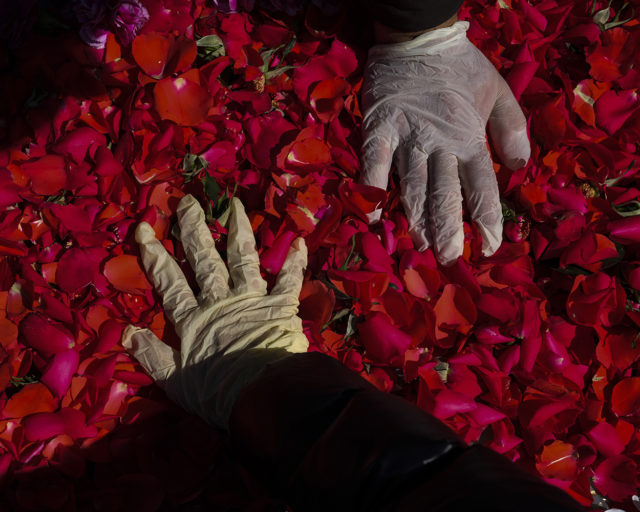Natalie Keyssar, Venezuelan opposition protesters convened at the Simon Bolivar Bridge from Cucuta to Tachira, Cucuta Colombia, February, 2019, for TIME
In the introduction to his 1978 book, Mirrors and Windows: American Photography since 1960, John Szarkowski proposes that, in the midst of the twentieth century, photographers’ aims, ambitions, and outputs quickly shifted away from the traditionally “professional,” and instead firmly toward the “personal.” “The role of the professional is by nature social; [their] livelihood depends on the production of work that others find useful,” he writes, explaining that with the rise of general interest, photo-heavy magazines such as LIFE, Look, Picture Post, VU, and others from the 1930s onward, photographers were provided with both a structure and a platform that could support them financially and, at the same time, accommodate their creativity and guide the direction of their work. Szarkowski suggests that for approximately twenty-five years there was “a coincidence of interest between the creative photographer and the mass publisher,” which often centered around issues of broad social concern. “But by 1960,” he notes, “it had been largely lost.”
Earlier this autumn, while speaking with the documentary photographer and photojournalist Natalie Keyssar—whose work regularly appears in Time, the New York Times, National Geographic, and elsewhere—about challenges she’s faced on assignment, I was reminded of Szarkowski’s argument. “As a teenager in North Carolina, I was very interested in social justice,” she explained. After moving to New York and completing an undergraduate degree in painting and illustration, she found herself turning toward photojournalism. “I realized that if I just sold what I was making to rich people to hang over their sofas, that sucked. And I didn’t want to spend eighteen hours a day alone in a studio. So eventually, I applied to do an internship with two photojournalists who took me under their wing, gave me a camera, and basically said, ‘Just don’t lie and go shoot.’”

Courtesy the artist
Keyssar’s earliest assignments were mostly for daily newspapers and tabloids, and eventually she worked her way up to shooting regularly for the New York Post. Most of the assignments Keyssar received from the Post were straightforward—broken water mains, press conferences, and so on—but then she got what she regards as one of her hardest assignments, which also became her last for the paper. “It was about ten years ago, and I was told to stake out an elementary-school teacher who had written an op-ed piece for the Huffington Post in which she talked about her previous experiences as a former sex worker,” she said. At the time, the New York Post was regularly plastering their front page with sensationalist headlines about the woman, referring to her as the “hooker-teacher.” “She was this totally amazing woman,” Keyssar continued, “with two master’s degrees, who was educating children as a New York City Teaching Fellow in a school in the South Bronx, who had conducted ethnographic research and written about sex workers’ rights in the past—and they sent me to wait outside of her apartment.”
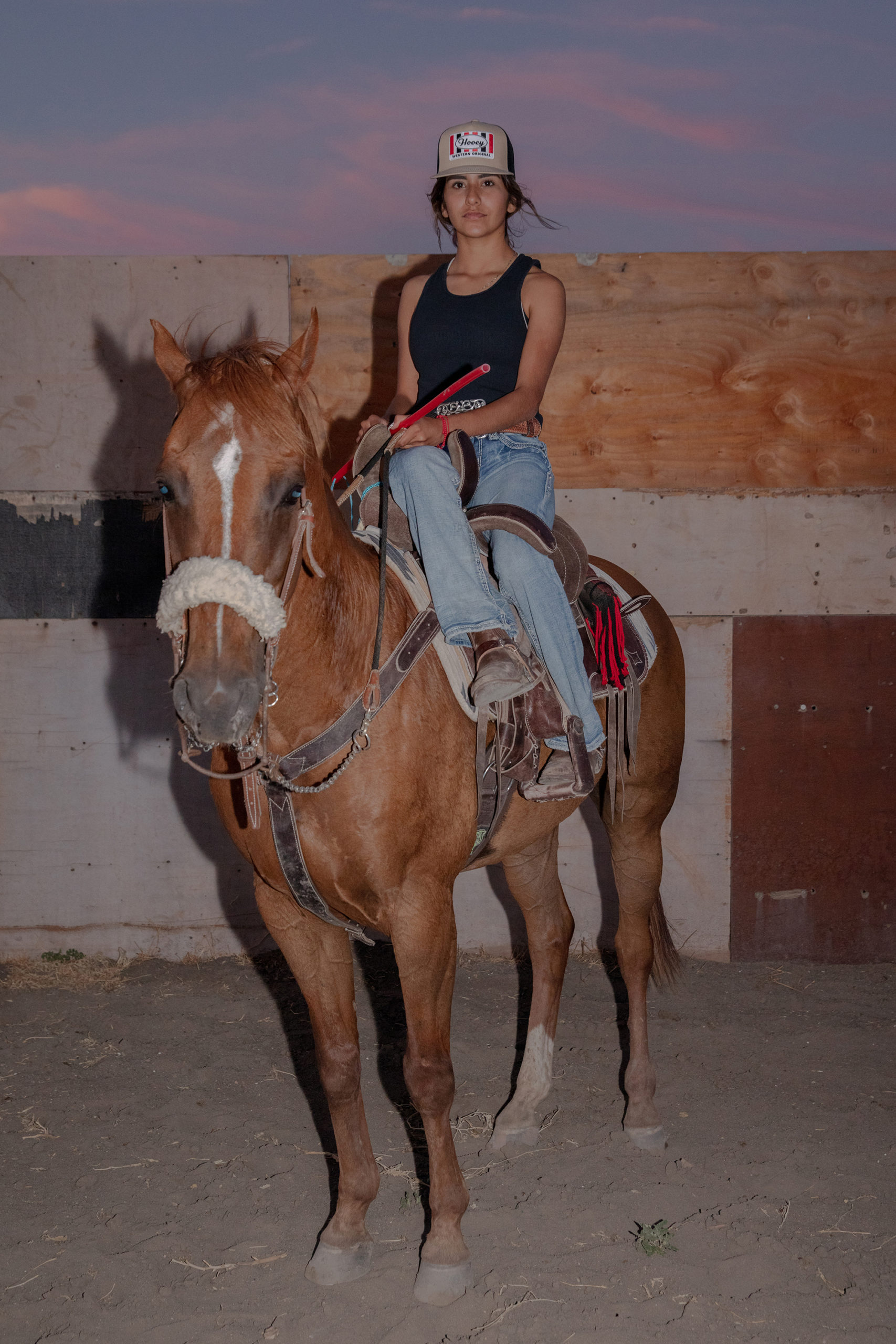
Courtesy the artist
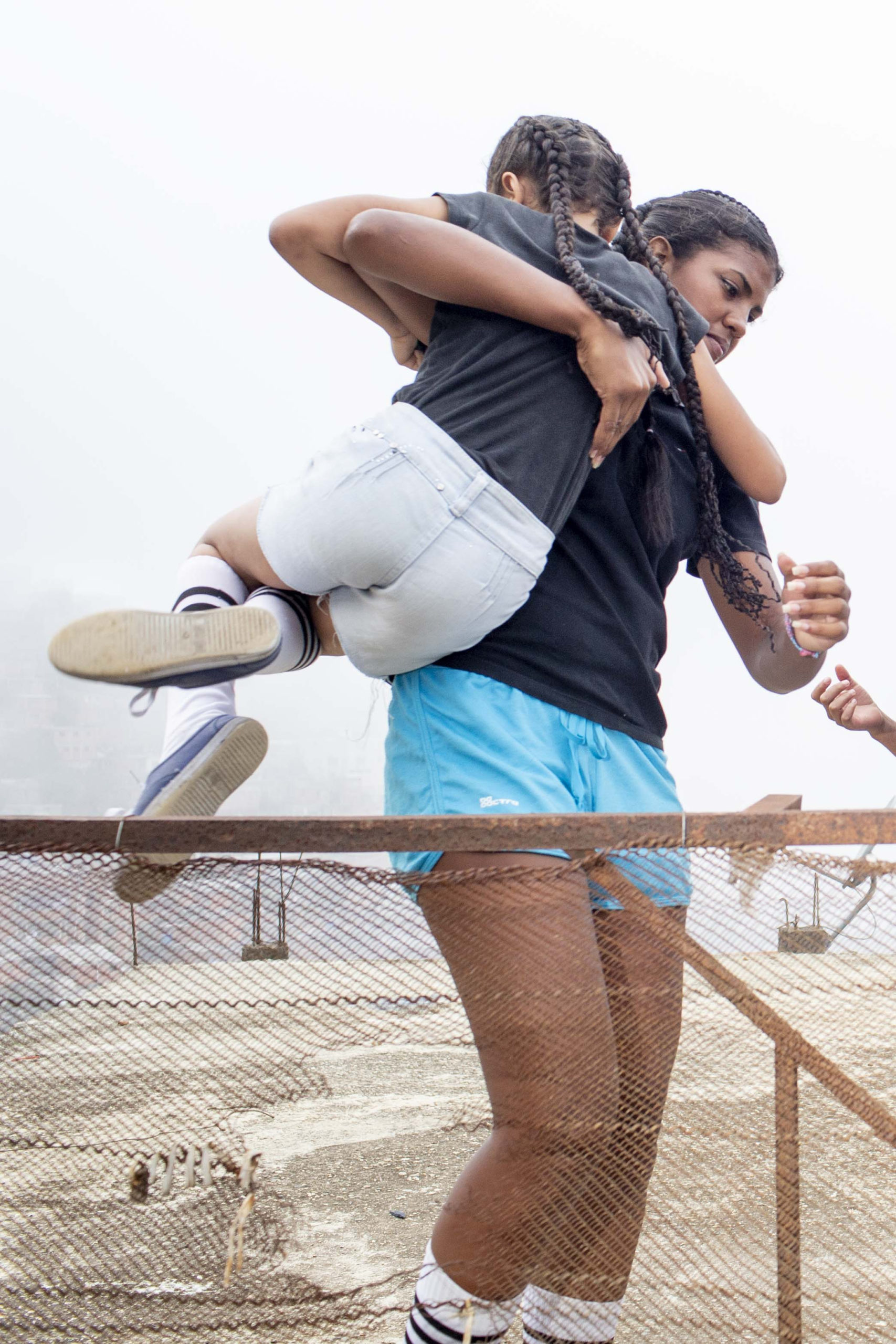
When Keyssar arrived, she discovered a gaggle of male photographers already standing at the address in the rain, so she moved away from the crowd. “I strongly identify as a feminist, and as somebody who was pro-sex-worker rights, so internally I was freaking out; it was all so predatory,” she said. “The paper was putting a lot of pressure on me to do this, and I was so young that I didn’t have the words to argue with them about it.” Then, while Keyssar was standing by herself having what she describes as an existential crisis, the woman finally arrived home holding an umbrella. “The men were being really aggressive, so she blocked them all with her umbrella. But because I was standing apart from them, it left my shot wide open—and I just did nothing. My body was just like, ‘Nope.’”
Keyssar is often asked by students where she draws an ethical line when it comes to her work. “My rules are pretty straightforward—don’t lie, don’t cheat, and do no harm,” she said. “But in terms of that particular assignment, I was so young. I wish that I could say that I’d already consciously decided that I’d never take that picture, but to be honest, I was just grateful that my body made the right choice in that moment. I was just not going to make that photograph, and I realized that I couldn’t do that kind of work anymore.”

Courtesy the artist
Ethical concerns and considerations have always proved to be challenging territory for photographers on assignment, beyond just the realm of photojournalism, yet many contemporary photographers identify the biggest problems stemming from systemic issues in the media industry and culture at large. Indian-born artist and activist Poulomi Basu, whose ten-year-long transmedia project Centralia was shortlisted for the 2021 Deutsche Börse Photography Foundation Prize, recently explained: “The primary reason I’ve found assignments hard is because of the limited time that I’ve been given to be in a certain situation. I steer away from photojournalism these days, because I found it to be very unbalanced when it came to giving long, sustained assignments to people of color.”
Currently based in England, Basu began her career in India. “I never really found myself at home in photojournalism, but it just so happened that I was based in India, so I was suddenly pigeonholed into this box that I should be doing little stories from there,” she said. Several years ago, she was commissioned by a major international publication to shoot a story on leprosy in India. “It was horrendous, because we only had one or two hours to be in the community. This is a bunch of women who have been ostracized, living in this really isolated, lonely home in exile, and I only had an hour and a half to photograph them,” she said. “I literally felt like I was robbing them of their time, their dignity, and their life. It was the most awful experience; I went back to my hotel, broke down, and said to myself, ‘This is the end of my career in photojournalism.’”
Since then, Basu has been able to more firmly define and understand her position, values, and obligations as a practitioner. “I’m a postcolonial artist and activist. I don’t just parachute into places and bring back ‘news’ or whatever; I have a responsibility towards the people who are my race, my color, and general humanity at large,” she said. “If people aren’t going to invest in photographers of color doing long-term assignments—if you can’t share meals with the people, if you can’t spend time with them, immersing yourself in the community—then as far as I’m concerned, it’s no way to do any kind of reporting. That story was published as the cover of the magazine, but I never even bothered to get a copy of it for myself, because I was so horrified by the whole experience.”


Basu is still approached with commissions on a regular basis, which she often turns down. “Even in the last few months, I’ve had an editor say to me, ‘So when are you going to be in India next?’ And I’m like, ‘Are you joking? I live in the UK–give me work here!’ It’s so humiliating,” she explained. “I’ve been given some assignments in the West, but it’s very rare, and I’ve never been given an assignment to go into a white community. The industry is so deeply racist, I can’t tell you.”
The photographer Quil Lemons partially echoed and then broadened these sentiments far beyond the industry itself. “I always think that it’s interesting that, when I get pitched stories, a lot of them are Black,” he said. “At this point in my career, I find myself not really wanting to have any labels put onto anything that I do. I think that you should just feel the art and it shouldn’t matter. And we all wish we didn’t have to be talking about our Blackness all the time. But in being a Black photographer, the fact is that my Blackness often comes before my photography, which is so annoying and can also be very limiting.”

Courtesy the artist
Lemons first gained attention several years ago through his self-initiated project Glitterboy (2017), and has since been regularly commissioned by publications such as Vogue, Variety, i-D, and GQ. (In March 2021, at the age of twenty-three, he became the youngest person ever to photograph for the cover of Vanity Fair, which featured Billie Eilish.) When asked what his most challenging assignment has been thus far, Lemons responded that it wasn’t about making pictures. “It’s literally just being Black. It’s knowing how hard it is to exist and survive as a Black person in the world, let alone have a career. I don’t know anyone else’s experience, but I do know what it is to live in my body, and it’s not easy; it’s a lot—mentally and emotionally,” he said. “That’s why I always commend anyone who’s Black and operating in this space—because I know what I’m up against, and I can only imagine what they’ve had to deal with. I don’t shy away from the responsibility that comes with all of this; I just want people to acknowledge that this is what we have to think about every time we pick up that fucking camera.”


At the same time, Lemons recognizes that there has been some progress. “I think it’s really interesting to come into contact with an industry that until recently has ignored people that look like me, and ignored a perspective,” he said. “And in the last two years, there seems to be a shift happening, with the industry saying that they’re going to support young Black creators and be more inclusive—just with me being in that space, you can see that change happening.” But he also recognizes that, for lasting progress to be made, like it or not, the brunt of the responsibility may still ultimately end up on photographers themselves. “I also feel that my generation of photographers is not adhering to certain limitations or expectations,” he continued. “Maybe the industry now is finally catching up and realizing that you don’t have to put people into a box. But as creators, we have to make sure we’re not just used as token symbols, and we also have to push for and create more structural changes for ourselves. We’re all trying to do that, but it’s hard—we need money, we need capital, we need support on a very deep level to make sure that this doesn’t become just a blip in time. We need to learn how to come together, to support and protect one another in ways that we can’t have our shit be stolen.”
“When I was in New York in 2017, I had a major identity crisis,” said Ashish Shah, one of the most influential and sought-after fashion photographers in India, who has recently photographed major campaigns for brands such as Alexander McQueen and Byredo. At the time, he was in the midst of a six-month internship at 2b Management, which represents photographers such as Peter Lindbergh and Ellen von Unwerth. “I was working for a lot of French people there, and I saw their amazing love for and appreciation of their own culture.”

Courtesy the artist
Shah realized that his own work up to that point, and fashion photography in India in general, rarely celebrated or even reflected the country’s rich culture or contemporary reality. “What we were doing for the longest time in India was trying to make Indians act like Westerners. We were shooting Brown women with black hair, and yet all of our reference points would be of blonde supermodels; we wanted an Indian model to act like Cindy Crawford or Claudia Schiffer. I don’t know whose fault it is, because India is such a new country when it comes to fashion photography, consumer culture, and so on, but there wasn’t really any acceptance of what was Indian. When I talk about acceptance, what I mean is accepting the reality of what my country has to offer, and understanding that there is a beauty to it.”
On returning to Mumbai in 2018, Shah started working with designer Sanjay Garg’s India-based fashion brand, Raw Mango, which is deeply invested in promoting and celebrating what is truly Indian. “Because of him, I started to accept my own people and culture,” Shah said, “and how Indian bodies are. I began to really understand Indian draping, Indian postures, Indian gestures and expressions, how Indians sit in a certain way, how there’s a certain amount of carelessness in our body language, how men have a huge feminine side, and so on—that really opened my eyes.”

Courtesy the artist
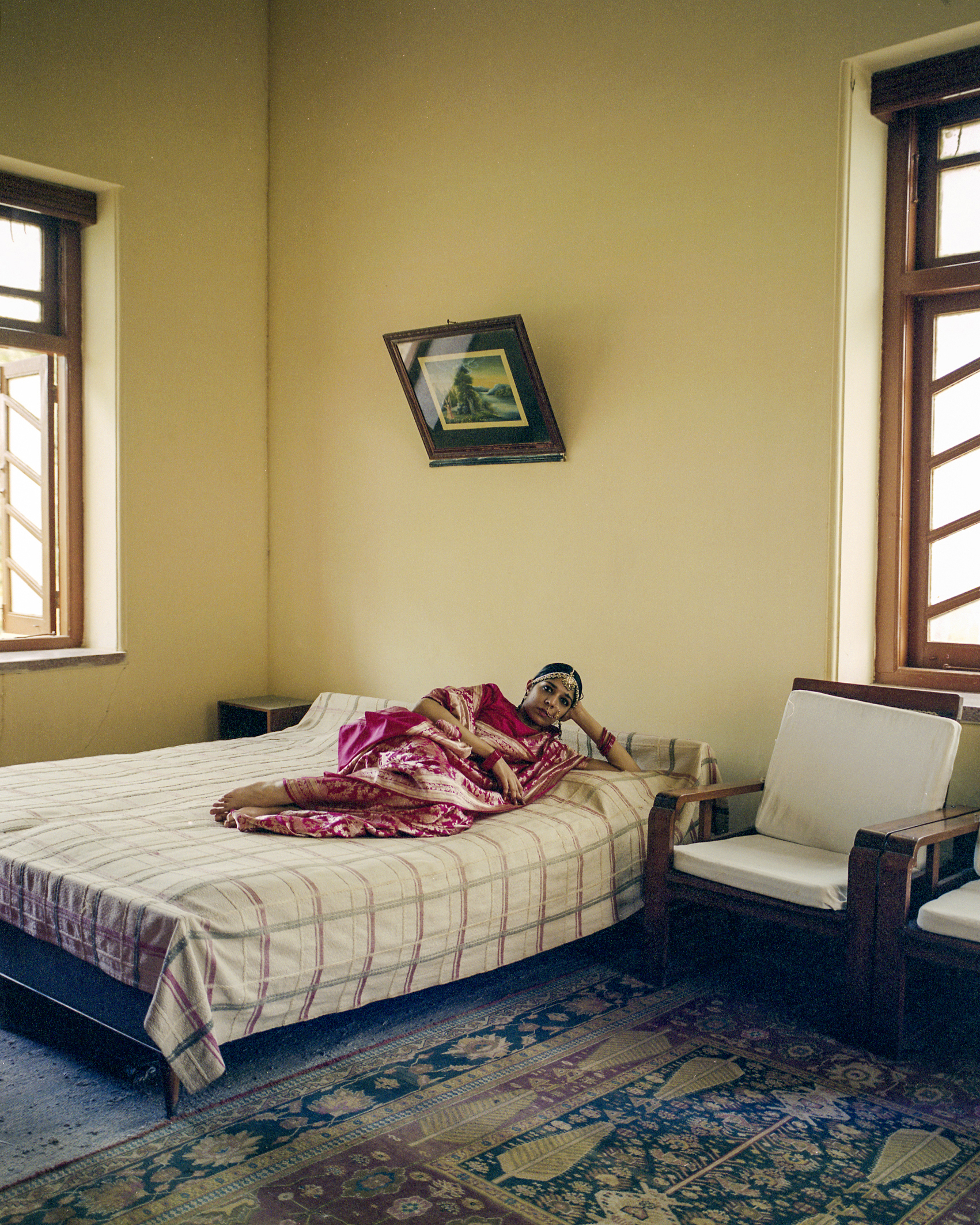
As a result, Shah began to embrace the surrounding environment, letting it dictate his aesthetic rather than attempting to “correct” or manipulate it to suit Western expectations. “I started shooting in natural rather than artificial light, appreciating the hazy quality, the unique tonalities, and the color palettes of Indian light,” he said. “One of the challenges that I’ve been facing lately is that no matter how much someone wants to celebrate India, still there is a very strong [stereotypical] perception of us.” Shah is regularly approached by some of the biggest international brands and publications to photograph in India, but he says that they often request a “colorful” version of the country: “That highly-saturated imagery which Steve McCurry and others flooded the international market with for so long is crazy. Contemporary India doesn’t look like that—that India doesn’t really exist—and it has become a big problem for us. I have to explain this to clients outside of India all the time. I want my images to have nuance—to accept, appreciate, and celebrate Indian culture, heritage, and the realities of India now.”
In Mirrors and Windows, Szarkowski writes, “As the magazines grew older and their procedures more regular, it became increasingly difficult for even the most determined photographers to use the magazine as a vehicle for their personal views of the world.” Yet today, photographers continue to find new and innovative ways to negotiate that territory between producing “social” and “useful” work—while at the same time allowing their photographs and careers to be vehicles for personal views, visions, interests, and intentions.
“Recently, I’ve been increasingly making all of my processes more collaborative, which inherently requires my active presence and authorship to be in conversation with the active presence and authorship of the people I’m photographing,” Keyssar explained. “The starting point for me now is being honest about my own practice, and my own capabilities. What I’m asking of myself is honesty, not objectivity.”
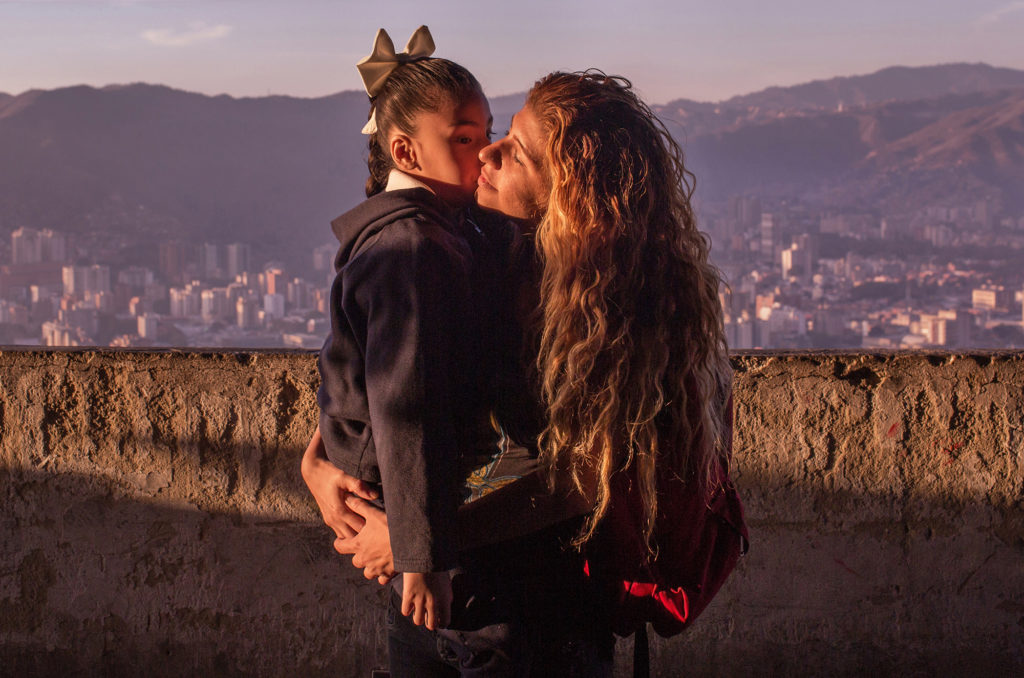
Courtesy the artist
“Greater engagement and creating a groundswell is very important—to be able to go back to communities and see change happening,” Basu reflected. “I’m not saying that everyone has to do it, but I don’t come from the elite or a first-world country, so my perspective is very different when it comes to these things. There’s no point in my work being in these big publications or famous galleries if it doesn’t, in some form, go back towards the community. As an activist, I don’t just care about the pictures or the photo project; I care about the bigger world that exists outside of it, and how I can help, activate, and empower people through it.”
For Lemons, it’s also a matter of capitalizing on his newfound position of influence to create meaningful change, understanding, and opportunities for others. “I’ve had a lot of great opportunities and experiences myself, but I’m really trying to go for something bigger. How do I do something with this platform that’s actually impactful, something beyond the scope of myself?” He also recognizes that there is something especially unique and powerful about his chosen medium. “Photography has become this really interesting touch point—because we all see it, we all use it, we all understand the act of making an image, and we all have a basic understanding of what is beautiful. And maybe that’s the solution with all of this—to keep making this work, and maybe people will see us.” Lemons then swiftly corrected himself. “In fact, I’m not really asking for people to see us—I’m like, ‘You are going to see us.’ That’s the difference—it’s a declaration, where we’re firmly standing in our existence.”
